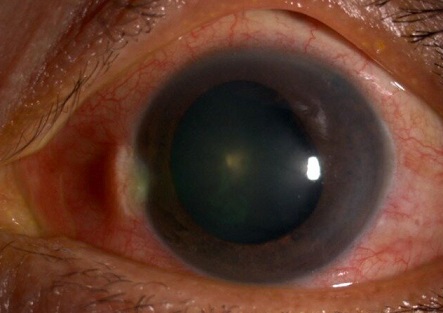Canadian Scientists Alarmingly Discover Risks of Osteoporosis Drugs Like Risedronate on Eye Health
Nikhil Prasad Fact checked by:Thailand Medical News Team Jan 11, 2025 3 months, 2 days, 4 hours, 23 minutes ago
Medical News: Understanding the Link Between Osteoporosis Drugs and Eye Issues
A new study led by Canadian researchers from Dalhousie University in Halifax, Nova Scotia, and the University of British Columbia in Vancouver has revealed a concerning association between commonly used osteoporosis drugs, particularly bisphosphonates such as risedronate, and an increased risk of acute angle closure (AAC), a serious eye condition. These findings have profound implications for millions of osteoporosis patients worldwide, emphasizing the need for enhanced awareness and careful monitoring.
 Canadian Scientists Alarmingly Discover Risks of Osteoporosis Drugs Like Risedronate on Eye Health
Canadian Scientists Alarmingly Discover Risks of Osteoporosis Drugs Like Risedronate on Eye Health
Bisphosphonates are widely prescribed to treat osteoporosis, a condition affecting bone density and strength. This
Medical News report delves into the potential risks associated with these medications and provides insights into the comprehensive research conducted by the Canadian scientists. The researchers utilized a large-scale health claims database to examine whether bisphosphonate use elevates the risk of AAC and open-angle glaucoma (OAG), another eye condition.
The Study Design and Methodology
The research was a retrospective cohort study, incorporating data from 208,111 osteoporosis patients across the United States between 2010 and 2018. These patients had been prescribed either bisphosphonates or raloxifene, a drug chosen as a reference due to its distinct pharmacological properties and lack of association with glaucoma. The study utilized the PharMetrics Plus Database, encompassing health claims from over 150 million unique individuals.
Patients diagnosed with AAC and OAG were identified using specific diagnostic codes, while those without these conditions served as the control group. The AAC analysis included 372 cases and 1,488 controls, with a mean age of 70.4 years and an average follow-up period of 2.9 years. Meanwhile, the OAG analysis encompassed 3,184 cases and 12,736 controls, with a mean age of 71.5 years and an average follow-up of 2.7 years.
The researchers employed conditional logistic regression models to calculate adjusted incidence rate ratios (aIRRs) for AAC and OAG, adjusting for confounding factors such as cardiovascular conditions, diabetes, and hyperopia. Notably, they also analyzed whether higher prescription frequencies of bisphosphonates influenced AAC risk.
Key Findings
The study uncovered significant findings regarding the relationship between bisphosphonate use and AAC:
-Increased Risk of AAC: Bisphosphonate users had a 78% higher risk of developing AAC compared to non-users (aIRR: 1.78; 95% CI: 1.05-3.01).
-Risedronate and AAC: Among the bisphosphonates studied, risedronate posed the highest risk, with users experiencing over double the likelihood of developing AAC (aIRR: 2.12; 95% CI: 1.17-3.87).
-Frequent Prescriptions and Elevated Ri
sk: Patients prescribed risedronate more than five times in the year preceding the AAC event exhibited an even greater risk (aIRR: 2.76; 95% CI: 1.11-6.90).
-No Link to OAG: The analysis found no significant association between bisphosphonate use and OAG, suggesting the risk is specific to AAC.
Implications for Patients and Healthcare Providers
The findings carry important public health implications. With osteoporosis affecting millions globally, understanding potential side effects of its treatments is critical. Acute angle closure, while rare, is a medical emergency that can result in permanent vision loss if untreated. Early symptoms may include sudden eye pain, blurred vision, and nausea, necessitating immediate medical attention.
Physicians prescribing bisphosphonates should educate patients about the potential risk of AAC and advise them to report any unusual ocular symptoms promptly. Moreover, healthcare providers should carefully evaluate the benefits and risks of bisphosphonate therapy, particularly in patients predisposed to AAC due to factors such as hyperopia or a history of ocular conditions.
Limitations and Areas for Future Research
Despite its robust design and extensive data, the study had limitations. For instance, it lacked access to detailed diagnostic information, such as intraocular pressure measurements, which could have provided a clearer picture of glaucoma severity. Additionally, the study could not assess the impact of different bisphosphonate dosages or durations, leaving room for further exploration.
Another limitation was the absence of coding for predisposing factors like hyperopia or myopia in the database. These gaps highlight the need for future research incorporating more granular data and diverse populations to validate and expand upon the findings.
Conclusion
This groundbreaking study underscores a critical yet underrecognized side effect of bisphosphonates, particularly risedronate, in osteoporosis treatment. Patients using these medications are at an elevated risk of developing acute angle closure, with risedronate posing the highest risk among the drugs studied. Physicians and patients alike must remain vigilant, ensuring early detection and intervention for any ocular symptoms.
These findings highlight the need for balanced decision-making in osteoporosis management, weighing the proven benefits of bisphosphonates against their potential risks. By fostering open communication and incorporating comprehensive patient histories, healthcare providers can mitigate risks while optimizing treatment outcomes.
The study findings were published in the peer-reviewed journal: Eye.
https://www.nature.com/articles/s41433-024-03574-4
For the latest Glaucoma News, keep on logging to Thailand
Medical News.
Read Also:
https://www.thailandmedical.news/news/acute-angle-closure-cases-rise-after-covid-19-in-china
https://www.thailandmedical.news/news/sodium-levels-linked-to-glaucoma-risk
https://www.thailandmedical.news/articles/glaucoma-news
